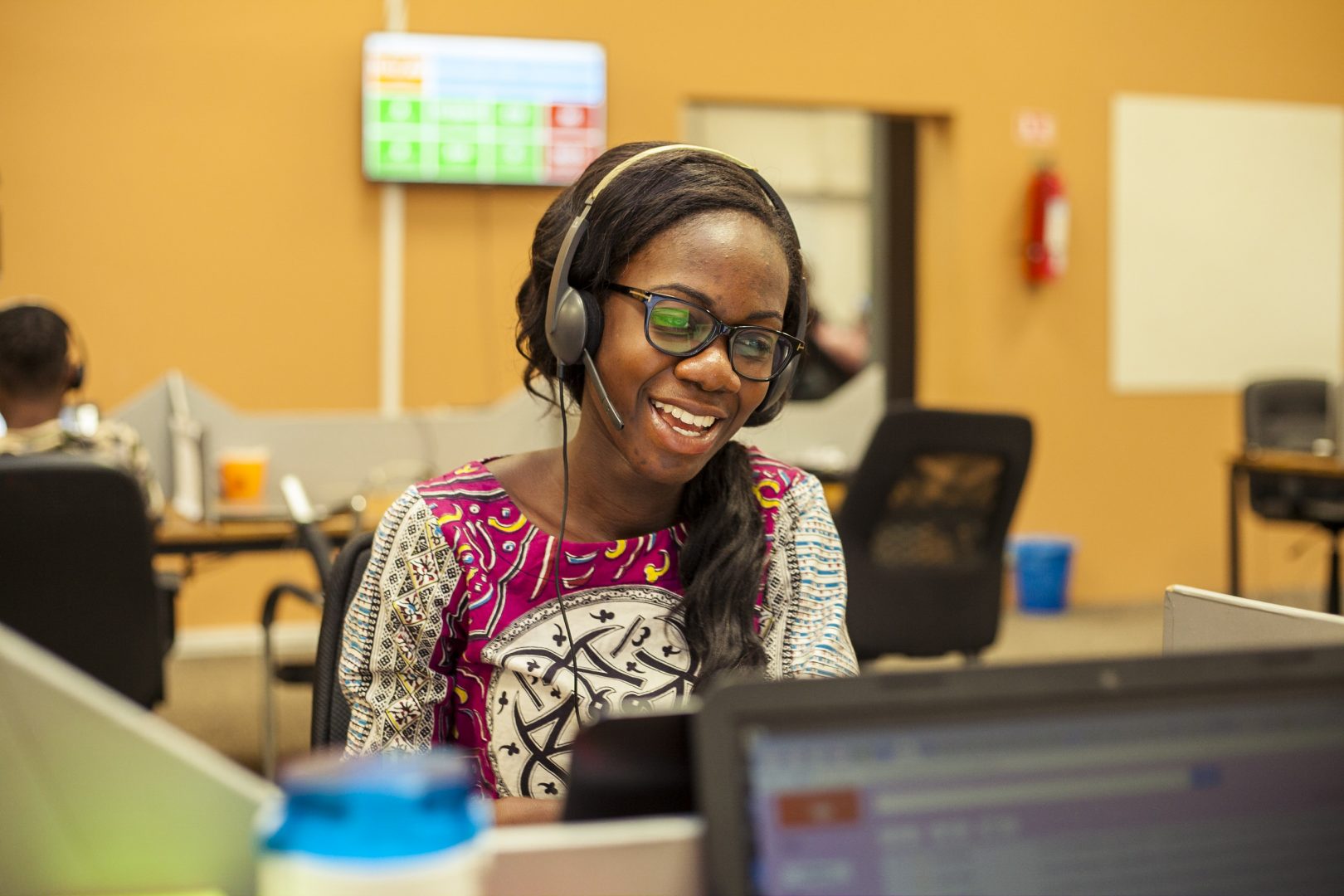The rate at which technology is becoming increasingly embedded into our lives needs no introduction. Over the past year even the most tech-phobic of us have had to adapt to online meetings, virtual learning and a whole array of digital events. And while many of us are anticipating the days when we can once again meet in person, advances in technology and its increased use over the past year have resulted in clear benefits; take for example the rise of online GP appointments which has increased access to healthcare.
At CDC, we know that technology is an essential tool for development, and that it’s required to find solutions to many of the UN’s Sustainable Development Goals. It can help increase access to critical services, such as healthcare, education and banking, create the right environment to help entrepreneurs grow their businesses sustainably, and enable data gathering to reach effective and local solutions.
Improving access to reliable and affordable internet is one part of this. As with traditional infrastructure, digital infrastructure is critical to economic development – enabling job creation and GDP growth. It brings positive social outcomes too – research demonstrates that information access has positive effects on welfare and subjective wellbeing. And increasing this access is important to overcome a digital divide, where those who have the internet thrive, while those who don’t become marginalised and excluded.
The proliferation of smart phones across all demographics and geographies has changed the way we interact with businesses and services, creating a huge opportunity in developing markets. In 2020 3.8 billion people used smartphones compared to 1.06 billion in 2012. In sub-Saharan Africa, smartphone use is predicted to accelerate rapidly from 44 percent user penetration in 2019 to 65 percent in 2025.
Furthermore, in 2019 the number of internet users globally rose to 4.13 billion, meaning more than half of the global population is connected to the internet. This statistic, while encouraging, masks the geographical inequality of internet access. In 2019 internet access across households in the European Union rose to 90 per cent, while in Africa internet penetration stood at 39.3 per cent.
The World Bank has estimated that it would cost $100 billion to achieve universal, affordable and good quality internet access across Africa by 2030. But the impact would be startling; according to The International Telecommunication Union, expanding mobile broadband penetration by 10 per cent in Africa would deliver an increase of 2.5 per cent in GDP per capita.
Given the huge potential for technology to improve lives, it is important to ask what development finance institutions can do to accelerate its growth and uptake in developing countries.
Firstly, we can play a key role in building the critical structure that enables high speed internet access.
This is why, two years ago, CDC backed Liquid Telcom with a $180 million investment allowing the broadband provider to expand connectivity to lower income households across the continent, including in the DRC. We provided risk capital at a critical time for the company. It has repaid our confidence by continuing its rapid rollout of a fibre network and recently raised another $600 million in loans from new investors including IFC, DEG and a broad group of commercial institutions.
We have also invested in internet providers in other developing economies like Nepal, as well as businesses using innovative technology to bring low-cost internet access to low-income neighbourhoods, like poa! Internet in East Africa. Investing in innovation isn’t new for us; we were one of the very first investors in Celtel, the African mobile network company over 20 years ago.
Secondly, DFIs can provide much needed support by increasing their investments in venture capital, both with direct investment and through locally-based VC funds. That is the most effective way we can reach and help the young ambitious and tech-savvy entrepreneurs who are building the sustainable and scalable businesses that can transform economies.
At CDC we’re investing in these early-stage companies that are using technology to provide local solutions to the problems and needs they see in their communities and regions. Take climate change and the climate-related impacts that many developing countries are already vulnerable to; tackling this issue can only be done effectively by adopting solutions which meet local needs.
For example, one of our investees, Cropin, a specialist in software for agribusiness is using technology such as satellite images, artificial intelligence and machine learning to monitor crop health remotely. In turn it’s not only improving farmers’ access to finance, but also helping them to be more resilient to a changing climate.
Another localised solution has been found by Loadshare; an Indian logistics company that uses technology to bring together small and medium logistics companies to create a pan-Indian network reaching local suppliers and rural customers. The company now has around 6,000 workers and suppliers in its network, and over the past four years has expanded across 18 Indian states, with 500 branches.
Throughout the pandemic Ghanaian healthcare company mPharma has been using technology, data and its innovative distribution model to address the lack of lab equipment and testing kits across African countries.
What connects all these opportunities is the need for equity, and if development finance is going to move the needle in accelerating the digital revolution we need to focus more on this type of investment. Innovation and transformation are driven by private sector companies finding solutions and scaling rapidly. These growing companies require long-term equity capital. They lack the cash flows, security and creditworthiness to get a loan. However, DFI capital tends to come in the form of debt or is invested in banks or large private equity funds. And while banks and private equity funds play a critical role, for example in getting capital to smaller SMEs in-market, banks do not traditionally provide equity and PE funds have less appetite to commit to riskier early-stage investments.
Fortunately, some progress is being made. 2019 saw record levels of investment in venture capital within emerging markets. In fact, according to research from EMPEA, venture capital in emerging markets more than doubled to $27.4 billion in 2019 compared to $12.6 billion in 2014. This trend was especially prominent in Africa where investments increased by more than 300 per cent from 2018 to $764 million.
We all know that we are most effective when working as part of a collaborative effort, with different organisations clear on the part they can play. There is a key role for grant makers to play in providing technical assistance and start-up capital to incubate businesses. DFIs can accelerate their investment to turbocharge growth and expand the reach and impact of these businesses. Working in partnership with other actors and stakeholders is important to create an environment which supports the development and growth of new businesses and technology.
You only have to reflect on the past year to see how quickly technological advances can embed themselves within our lives and change how we live and work. It is local entrepreneurs that are best placed to develop the sustainable solutions that meet the needs of their local environments. It is part of CDC’s and the development finance mandate to support them and help create an environment which fosters this innovation.








